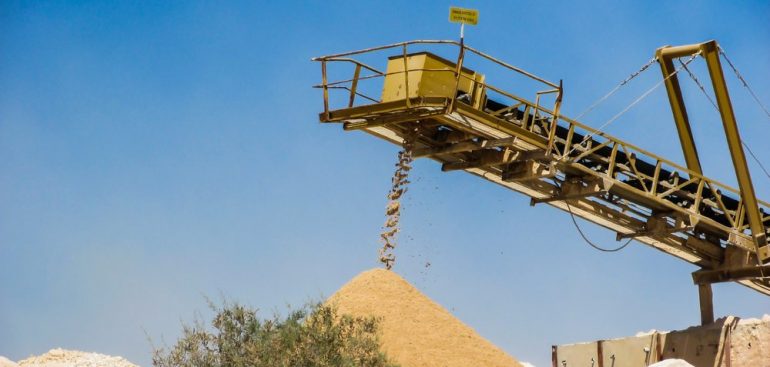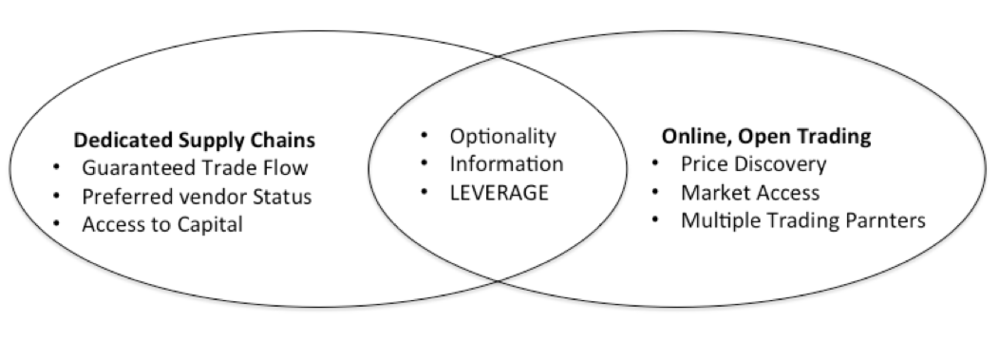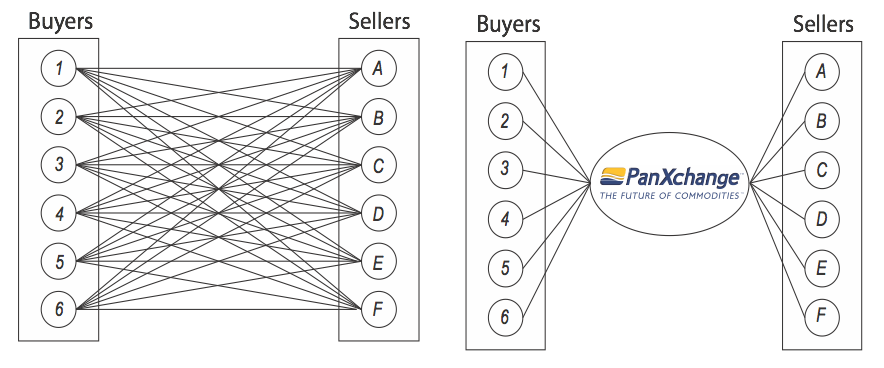Latest
Frac Sand: Raw Material or Fungible Commodity?
Since its first pilot launch in world market sugar, the PanXchange team has researched many different commodity markets, seeking to apply its aggregated market solution to those with the most inefficiencies, fragmentation and opacity. Staffed by a team of seasoned commodity traders, they understand the complexities of the sand market. There are varying qualities, multiple production and wellhead locations and insane logistical challenges. These challenges are not unique to sand.
More importantly, it’s no mystery how the sand market is evolving. When demand for a specific type of natural resource begins to grow, it’s only natural for both supplier and buyer to seek long term contracts (LTCs) to ensure steady deal flow. And as both supply and demand begin to grow, interim imbalances grow more disruptive. This is how a liquid cash (spot) market grows. This article contains a brief history of this evolution in iron ore, a trajectory that PanXchange thinks sand will follow. More recently and directly related to the shale revolution, is information on the maturing LNG market.
In 2017, it’s equally natural for these growing spot markets to migrate online. Technology has the ability to aggregate the pool of supply and demand, providing instant market access and price transparency. Most sand suppliers and buyers welcome this opportunity to increase operating efficiencies. But like any other commodity market, the stakeholders that provide much needed liquidity, delivery services and counterpart risk mitigation are less eager to embrace online marketplaces. Specifically, whether its a large trade house like Cargill or ADM in the grains market or a leading service company in the sand market, these large middlemen profit from the opacity and fragmentation in today’s current physical markets.
Yet a growing spot and forward market does not mean you should phase out all of your long-term contracts. A blended solution is ideal, and some of the benefits and challenges are described below.
Exhibit 1: Open market trading is the only guaranteed outlet where companies can lay off risk – both anticipated and unexpected
RISKS AND REWARDS OF LTCS
To an operator, the largest benefit of securing vertical integration through LTCs is, of course, ensuring a steady deal flow. These agreements also increase operating efficiencies, sometimes eliminating a middleman and can even lead to preferred financing terms for mining companies. Alternatively, service companies and operators receive guaranteed supply, avoid broker commissions and often earn some loyalty in hard times of short supply.
However, risks of locking in LTCs include:
• Increased performance risk and default risk. What happens if the dominant player in the chain changes the price or terms during the deal? If one link breaks, does everyone go down? At a minimum, participating in more than one dedicated supply chain is wise but it still leaves the buyer vulnerable in the case of renegotiation.
• Where does the ultimate price risk lie? LTCs offer a guaranteed trade flow, but what about price? In LTCs, sand is a cost center and a raw material over which one often has little negotiating power on final contract price.
• Dearth of market information. Supply chain cooperation tends to occur in the middle of the chain. Thus, producers and consumers are generally left hanging where one wants to buy as low as possible and the other wants to sell high and all parties are often left wondering what the true spot price is.
• Lack of liquidity. The more dedicated supply chains, the more it pulls players off the open market. Is there anyone who could say that they can afford that loss of liquidity?
• Forced losses with take-or-pay agreements. Unforseen market events lead to miscalculation of long term supply and demand. Whether buyer or seller, paying a fee for unused sand is a sunk cost that could be avoided with more volume on the open market.
Cooperation and sharing risk is shrewd, yet relying solely on a dedicated supply chain leaves both buyer and seller vulnerable to unforeseen circumstances.
The chart above shows how an immature market trades vs PanXchange’s aggregated system. Technology has the ability to create more profit opportunities, more liquidity, establish new trading partners at nominal cost, and dramatically reduce operating costs.
WHY WE NEED OPEN, ONLINE TRADING
Today’s open spot and forward market for sand is inefficient. Buyers and sellers spend hours siphoning through emails, listening to earnings reports, and “shopping their book” over the phone or through email and texts. Moreover, new markets like sand are so thin that sometimes even an indication of buying or selling interest could push the market away from you before you can get anything done. Yet, open market trading is the only guaranteed outlet where companies can lay off risk – both anticipated and unexpected. Nothing insures a company’s long- term health better than the liquidity and optionality that an open market provides.
As for the inefficiencies of open markets, electronic trading is the solution. Many entities have tried to use technology to mimic the offline open market, but a successful electronic platform needs to provide more than what direct negotiations offer. If done properly, electronic trading can provide the following:
• Direct market access at a fraction of the cost with aggregated supply and demand
• Instant price discovery. See the entirety of the market in real time. A month’s end analyst report is not actionable market information.
• Sophisticated pricing optionality; providing members the confidence that they receive the absolute best price that the market offers. Monitor intra-day prices, supply, demand, and trade flows. Build a bigger network of suppliers and other buyers. Look for arbitrage opportunities between two different supply locations. Never pay a contract penalty for not taking or delivering sand.
• Counterparty management & new counterpart access replete with anonymous trading
• A level playing field Whether a new entrant to the market outside of a dedicated supply chain, or an established player stuck with a broken link in the chain, an open, electronic marketplace will always provide the ability to transfer both risk and the physical product.
Joint ventures, long-term agreements and other forms of cooperation provide all participants with benefits in sharing risk and improving operating efficiency. Yet while dedicated supply chains are practical and profitable, they cannot succeed without a robust and open market. And that open market can be an even greater asset with the liquidity, efficiency and optionality that technology now provides. Finding this balance is where sand can go from a point of vulnerability as a raw material cost to a potential profit opportunity.




